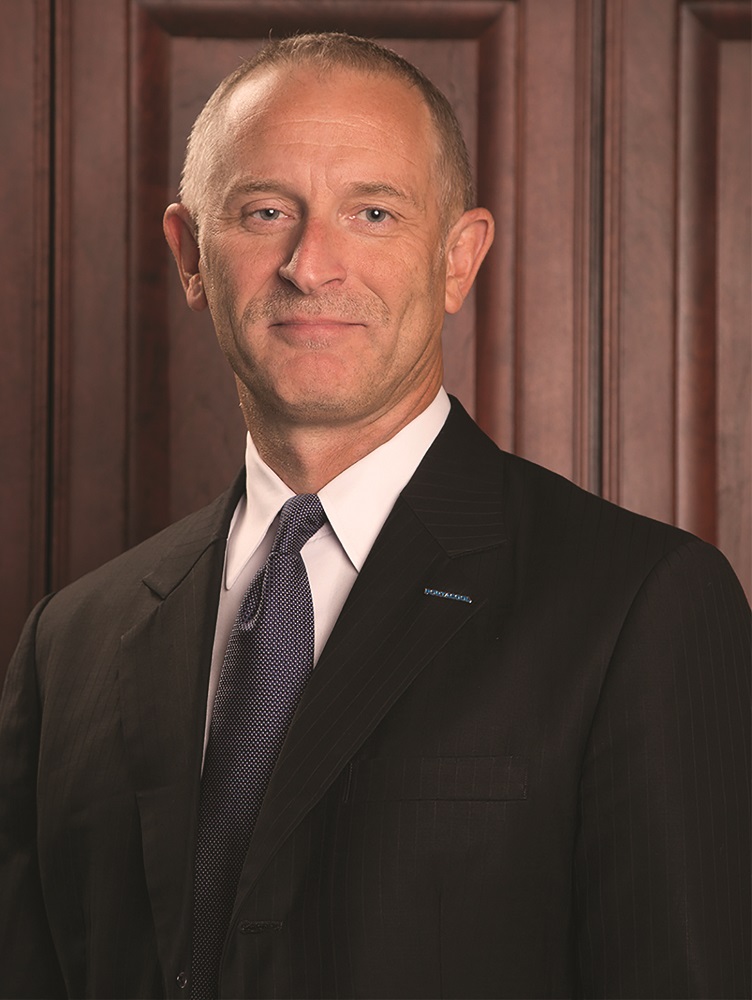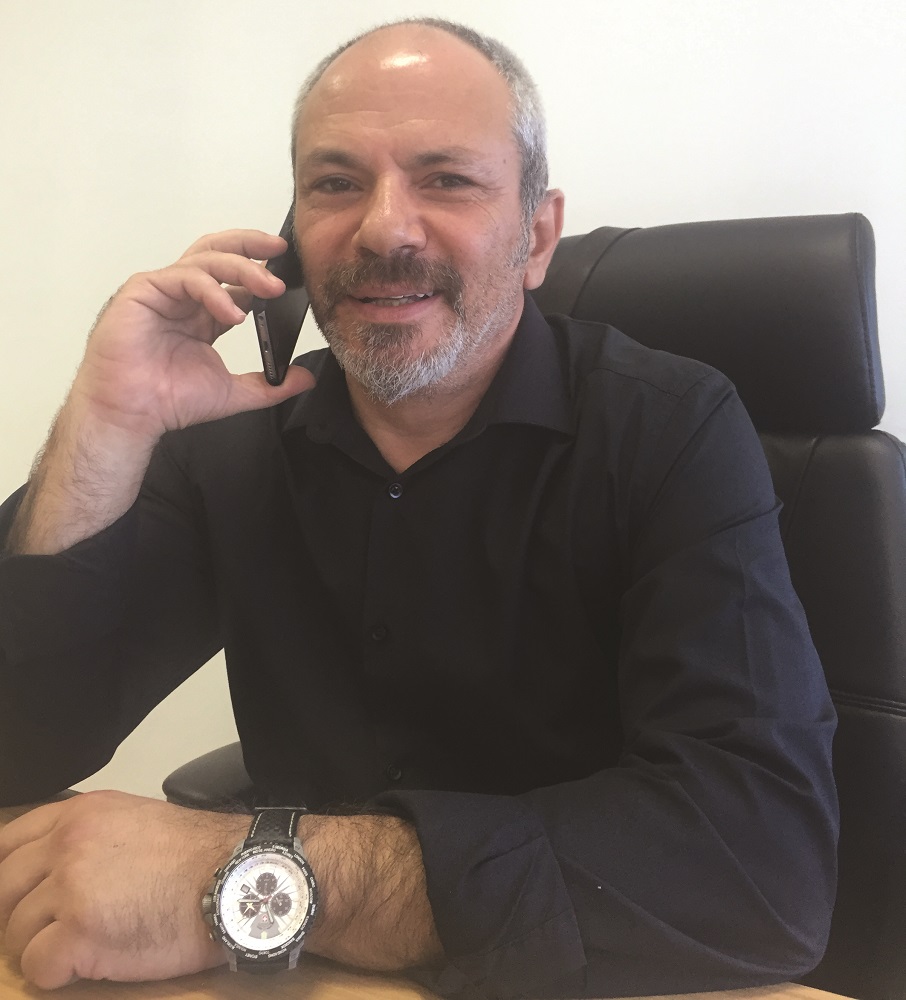While rough economic conditions may have slowed down some sectors in the region, the outdoor cooling industry looks to new markets, like affordable housing, and innovations in evaporative cooling and misting technologies to keep demand strong and achieve growth.
Ever since oil prices started dropping, there have been rumblings in the HVACR industry and its related sectors of business slowing down, of fewer projects in the pipeline and payments being late. But if it were up to Bob Mangiaforte, people in the Middle East would adopt a more optimistic outlook, instead of letting glum speculations about the economy bring them down, because he thinks the situation is not as dire as it may seem.

Bob Mangiaforte
“It was pretty negative coming into this year,” says Mangiaforte, Vice President for Sales at Portacool, a Texas-headquartered manufacturer of portable evaporative coolers. “The overall mentality of the customers and the media has just been negative in the last 10 months or so. And I find that negativity is one of the biggest challenges in the market at present, since there is much going on in the region.”
To support his claim, he shares the information that Portacool had a strong 2015 and is so far enjoying a busy 2016. “The outdoor cooling industry is growing overall, with all the GCC [region] markets showing a lot of economic activity. Our position, therefore, is that this is going to be a good year,” he says, explaining that the activity is primarily spurred by construction projects and the growing attention being given to worker safety and productivity.
“Companies are realising that comfort counts and that there’s a need to keep the heat at bay. They understand that they have to look after the well-being of their workers, if they want their projects completed,” says Mangiaforte.
Of the projects that his company is currently working on, Mangiaforte cites infrastructure developments like railway systems (metros) and airports in countries like Qatar, Oman and the UAE as among their biggest, adding that more should crop up as Dubai Expo 2020 and the Qatar 2022 FIFA World Cup draw nearer – an expectation that is shared by Jean-Paul Logiotatos, CEO of HydroCool. However, it’s just not one that is uppermost on his mind.
“We haven’t really focused on Dubai Expo 2020 yet,” he says, “but I know what’s going to happen. By next year, we’ll start getting bombarded with requests. As for the World Cup, that’s still a while away, because right now their priority is building the stadiums. Any cooling-related conversation now will be centred on air conditioners and indoor cooling.”
Despite his last statement, Logiotatos clarifies that he does not mean to imply that air conditioners have no role in outdoor cooling. “There are events like exhibitions that require air conditioners, and we do supply them,” he says. He discloses, however, that demand for air conditioners is not what makes the bulk of HydroCool’s business, saying: “Generally speaking, no one really uses outdoor air conditioners here in the region, because they’re just too expensive. They’re not at all practical, and they require a lot of maintenance.”
The new trend is sky drones or misting drones that spin from the ceiling
What continues to be popular are evaporative cooling and misting technologies, observes Logiotatos, who – like Mangiaforte – thinks the market is doing quite well. “Last year was good for us,” he says. “We had very strong results. In fact, we were able to triple our turnover in 2014. For this year, we haven’t dropped our turnover targets, since we’re still reaching them every month and every quarter.”
On what’s helping the UAE-based HydroCool ride out what many industry insiders are describing as a subdued market, Logiotatos identifies a variety of factors, including having an “efficient after-sales service” and “solid relationships with a loyal customer-base in the hospitality sector”. But more than any other factor, he points to new products and extra offerings as being mainly responsible for his company’s robust performance.
Elaborating, he says: “We do a lot of R&D, and we scour European tradeshows and exhibitions to find breakthrough products in outdoor cooling. For now, the new trend is sky drones or misting drones that spin from the ceiling. They come in various sizes, for various applications. They’re becoming quite popular, as are hydro showers, and for obvious reasons. Both are an appealing mix of aesthetics and function.”

Jean-Paul Logiotatos
As per Logiotatos, a potential client for the hydro showers is one of the UAE’s biggest malls, which has expressed interest in installing the showers around its fountain. Emirates Park Zoo, meanwhile, has reportedly shown preference for the drones. “We do the entire zoo,” he says. “We’ve already installed wall-mounted misting fans there, and now we’re in the process of installing misting drones.”
Though Mangiaforte also cites new products as among the strengths of Portacool – they’ve released five new models this year, he claims – he credits the company’s local presence for enabling wider market reach. “We have a warehouse facility in the UAE,” he says, “which means we have people on the ground, and this has given us the ability to be flexible, to respond faster.”
He adds that it also helps that evaporative cooling is recognised as a cost-effective and eco-friendly technology. “Evaporative coolers only need water and an electrical connection. There’s no installation cost, and they’re portable. They’re cooling you can take wherever you need. Moreover, they’re a Green product, because they don’t require refrigerants,” Mangiaforte says, before stressing that the technology will only become more efficient over time. He explains, “We’re always looking into providing solutions, and we spend time and effort to find ways to increase cooling efficiency.”
Sharing his own views on the benefits of evaporative coolers, Logiotatos speaks on their power consumption: “They consume less power than a hair dryer or a toaster. As for misting systems, the smaller the nozzles and the higher the pressure of the mist, the less water they use. Evaporative cooling and misting are the most economical forms of outdoor cooling.” And HydroCool is said to be looking for ways to make them even more economical.
“We feel that there’s an opportunity to install fully customised misting systems in villas in the UAE,” says Logiotatos. “It will have to be at a package price, at an affordable price, so every single villa would have a misting system installed during or after completion of the building. So we’re working on a price that would be substantially lower than those we offer hotels, for example.” Estimating the total package to come under AED 15,000, he continues: “And that would include everything – pumps, stainless steel piping, etc. Because every household, every villa needs to have something for the outdoors.”
Giving reasons why such package is not yet being offered, he says: “We still have to use quality products, and we still have to offer two- to five-year warranties, which means we still have to source from our factories in the United States and in Europe. Let me put it this way: A typical industrial misting installation can go up to AED 250,000. But we want to bring that down to between AED 10,000 and 15,000 for households, and we want to give them accessible payment plans.”
In addition to tapping into the affordable housing segment, Logiotatos cites technology development as an area of opportunity for the industry, which his company is also exploring. “We are developing power technologies,” he says. “For example, right now, we have a machine that is battery-operated. All you have to do is charge the battery, and you can use it for three hours. We’re also looking into solar technology. What we really need to do now is to compact the technology even further, because you can’t place a full PV panel on top of the cooling equipment. So the PV panels have to be reduced in size.”
While Logiotatos admits that it might take some time before their work will yield the kind of technology that they have in mind, Logiotatos expresses his confidence in their success, saying: “It’s still years away before we can put a battery and solar panel on an evaporative cooler, which can last up to eight hours or draw from the sun and power right through the evening. But we’ve got our team in Singapore working on it, and there’s a company in Brazil that we’re engaged with that is developing a new product. Yes, it’s going to take time, and it’s all in the infancy stage. But the way I see it, by 2020, we should have a solar-powered evaporative cooling system.”
(The writer is the Assistant Editor of Climate Control Middle East.)
Copyright © 2006-2025 - CPI Industry. All rights reserved.